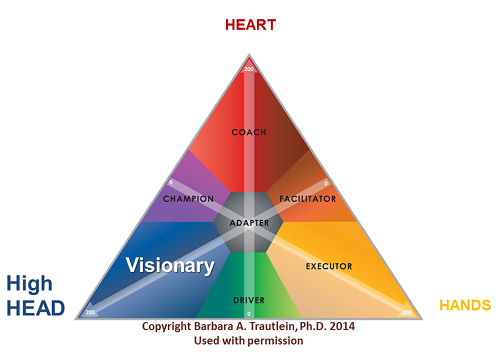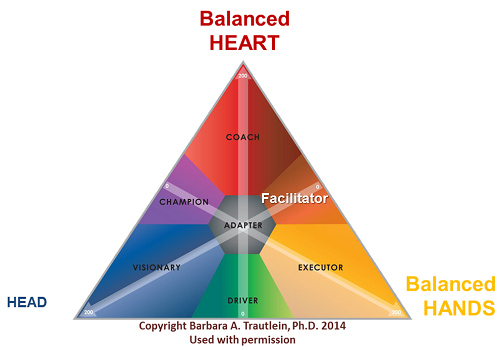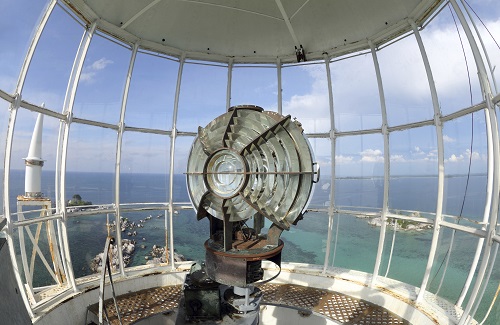When you walk in the room, who shows up for Read more →
Change Intelligence: Visionaries and Facilitators
Posted Tuesday, December 16, 2014As we continue to think about change intelligence, today we’ll look at the dynamic duo of “visionary” and “facilitator”.
Change Leader: The Visionary
Barbara Trautlein describes the visionary as strategic, futuristic and purpose-oriented. In other words, he or she is a high head change leader. 
Visionary leaders are important because vision is essential for successful change. In Kotter’s eight steps for planned change, three are about vision:
3. Create a vision. A powerful vision creates a brief and memorable summary of the change.
4. Communicate the vision. Engage your employees in dialogue about the change. Underscore the key points and get their feedback, insight and creativity.
5. Empower others to act on the vision. Encourage people to act without your tight control. Your vision should set direction and boundaries for the change. Let others sweat the details.
Visionary leaders are masters of these steps. They create focused energy for change, much like a Fresnel lens in a light house.
A lighthouse gives clear direction. But a lighthouse cannot bring a ship into port by itself. The ship needs sailors and charts. In the same way, a visionary cannot succeed just by focusing on the “head” aspects of change. Vision gets the ball rolling, but people and planning put the change into action.
In Kotter’s eight steps for planned change, the last three steps are more about heart and hands (or people and plans) than head and vision:
6. Plan for and create short-term wins.
7. Consolidate improvements and produce still more change.
8. Institutionalize new approaches.
Visionaries may falter in the heart dimension of change by wanting to move sooner than people are ready. They may be weaker in the hands dimension, lacking detailed planning and follow-through.
Visionaries should not try to lead change by themselves. A high-head visionary coach can partner with someone who is strong in heart and hands.
Change Leader: The Facilitator
Looking across the CQ triangle from the visionary, we find the facilitator, a change leader who is balanced on heart and hands.
 Trautleins’s motto for a facilitator is “Lean on Me – I’m Here to Help”. The facilitator is involved, helpful, resourceful and practical. They are strong on heart, being a good listener like a coach. And they are strong on hands, getting stuff done like an executor.
Trautleins’s motto for a facilitator is “Lean on Me – I’m Here to Help”. The facilitator is involved, helpful, resourceful and practical. They are strong on heart, being a good listener like a coach. And they are strong on hands, getting stuff done like an executor.
The facilitator’s strengths perfectly complement the coach’s weaknesses. And, the facilitator’s weaknesses – too tactical, lack of strategic leadership, hesitant to confront others – are compensated by the visionary’s focus on the head. These tradeoffs make the visionary and the facilitator our second dynamic duo of change leadership. (Coach and driver were the first dynamic duo.)
What if the visionary can’t pair up with a facilitator to lead the change? A visionary can look for two or more partners in change. You want at least one executor or driver to provide task leadership and at least one coach or champion to provide relational leadership. Then, the visionary’s head will be balanced with the hands and hearts of others to lead the ship of change safely to port.
This post is dedicated to CWO4 Harry B. Slade, USCGR, who started with the Coast Guard in WWII and ended in 1984 managing aids to navigation, including light houses with Fresnel lens. Semper Paratus!



Pingback: The Platinum Rule for Visionary Change Leaders